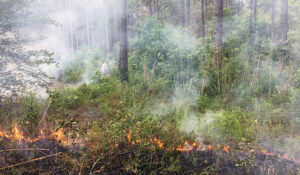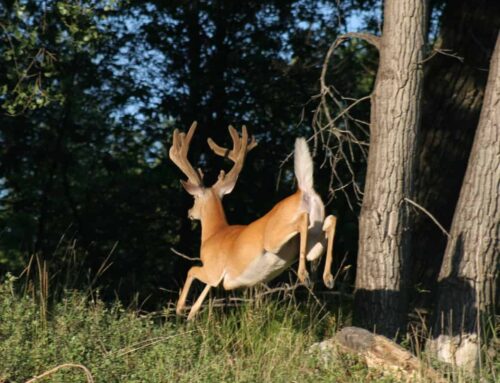 Adapted from the post “Controlled Burns Top Tool for Wildlife, Land Managers” by David Rainer, Alabama Department of Conservation and Natural Resources (ADCNR).
Adapted from the post “Controlled Burns Top Tool for Wildlife, Land Managers” by David Rainer, Alabama Department of Conservation and Natural Resources (ADCNR).
The downtime and prime weather conditions between the end of the white-tailed deer season and the opening of (spring) turkey season (is the time) to conduct controlled (prescribed) burns.
Steven Mitchell of the ADCNR said, “Dormant season, winter and early spring, is when most of our burning occurs…
“Burns can be conducted during the dormant season or growing season accordingly and, when used in proper scale and frequency, can attain a wide collection of land management objectives. Another added benefit of controlled burning is the reduction of fire hazards and fuel loads, lowering the chance of wildfires.”
Mitchell said just about all wildlife benefit from controlled burns in one way or another, including deer. “Of course, turkeys and quail benefit, as well as most game birds.
“Burning is the most economical and effective way to manage early successional habitat. After a burn, a lot of the plants that come back are the forbs and legumes and grasses, which are beneficial for most of our wildlife. There’s a lot of protein in native plants that grow back after a prescribed fire.”
Mitchell said studies have shown that turkeys and quail prefer areas with a burn management program, from freshly burned to areas that have burned within 3 years. After 3 years without a burn, the habitat becomes less preferred by turkeys and quail.
“If the area has a fire history that has been established and maintained, most of the turkey nests will not be in the areas that haven’t been burned within the past three years,” he said. “The nests are going to be in cover that was burned last year or the year before. The plant structure in those units that have been burned is their preferred habitat.
“You may have seen it with turkeys; the smoke hasn’t even cleared and they’re already out there scratching around.”
Mitchell said when areas that have burned get rainfall, the new growth could be popping up within a couple of weeks, and within a month enough cover is available to hide the animals. He said most wildlife habitat is on a one- to three-year burn rotation with the shorter frequency yielding more forbs and grass and less of a woody component and vertical structure. He said burn frequency is site specific.
“On poor soils, you might need to wait three years between burns,” he said. “In rich, heavy soils, ground cover may get too dense too quickly. You may need to tighten that interval or stay on that two-year burn cycle.
“When conducted properly, burning improves plant species composition and structure for ground-nesting birds. It reduces that litter layer. It increases the bare-ground component for wildlife movement and foraging. It promotes a lot of flowering and seed production, which increases insect abundance. For your young quail chicks and turkey poults, insects are crucial for their survival in the first couple of weeks to a month after they hatch out.”
Another aspect of fires that Mitchell said is often overlooked is that the activity may reduce nest predation.
“On upland areas with a good fire rotation, you’re going to reduce the woody or hardwood component and dense vegetation conditions that the predators like to hunt and keep them in hardwood bottom,” he said. “It reduces time the predators are in upland areas where turkeys and quail are nesting.”
Mitchell said the scale of the area to be burned is also important, with 50 acres considered about the ideal size. If the fire is too large, the turkeys and quail will use the area less.
“You want to burn in a checkerboard pattern to maintain an interspersion of burned and unburned habitat,” he said. “It’s been shown that turkeys don’t use burned areas over 250 meters from the edge of an unburned area until later when cover grows back to a certain level. If you can’t burn in a checkerboard pattern, burn in a linear shape so the wildlife will have access to adjacent unburned cover.”
Mitchells said land managers must give a lot of consideration to neighbors, roadways and whether the land has proper fire breaks and other safety aspects before trying to conduct a controlled burn. Humidity also plays a big factor on whether to burn. If the humidity falls below 30 percent, Mitchell said burning can become a little more dangerous. Many other parameters are also considered to safely and effectively conduct a controlled burn, and it is crucial to have the proper training.
“You need to know what you’re doing,” he said. “There are classes you can take. The Alabama Forestry Commission offers a four-day course for burn manager certification where people get a higher level of fire education and become much more comfortable with applying fire to their property.”
Additionally, before burning check with your state/local forestry and fire department for specific information and permits needed for a burn in your area.






